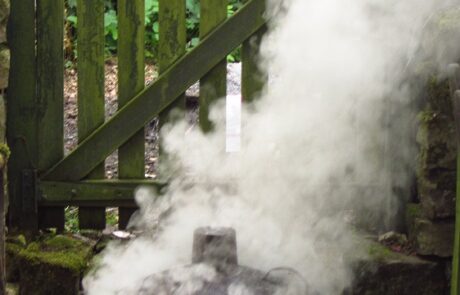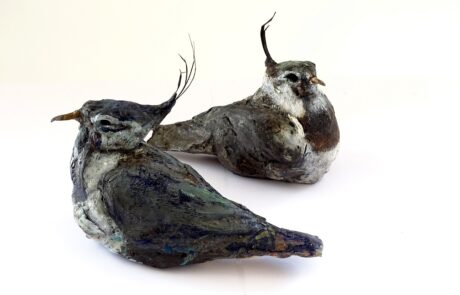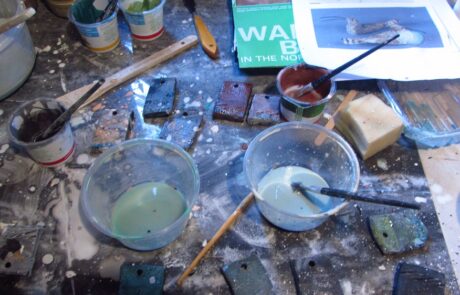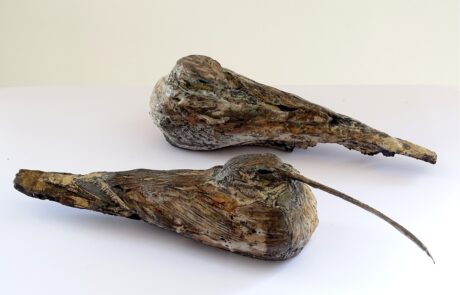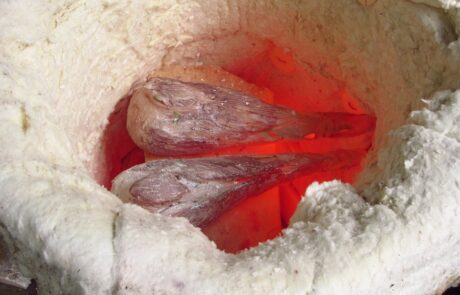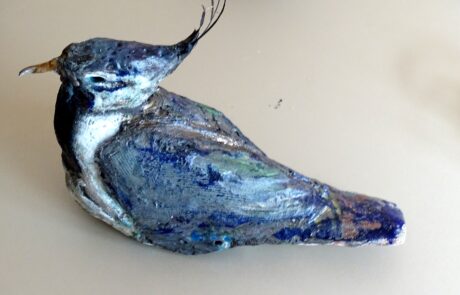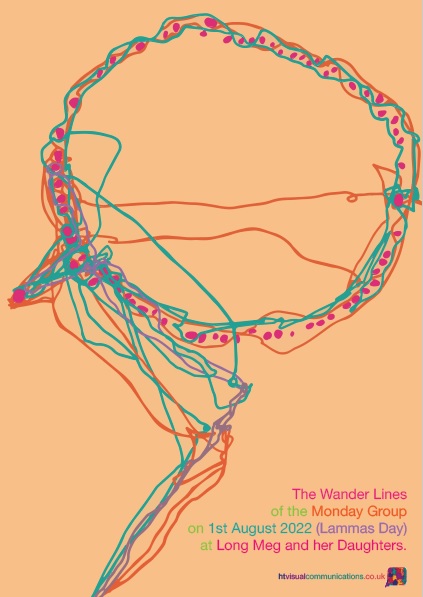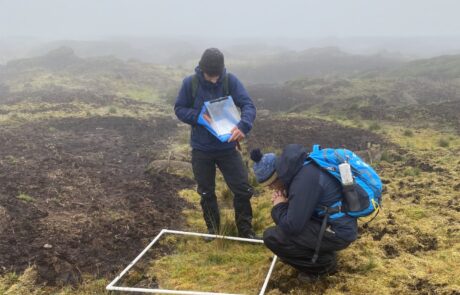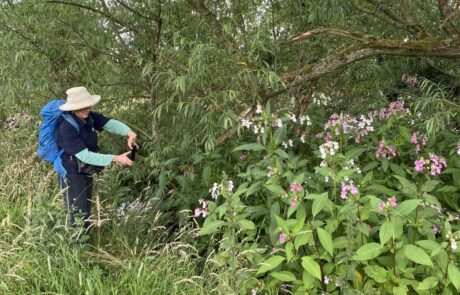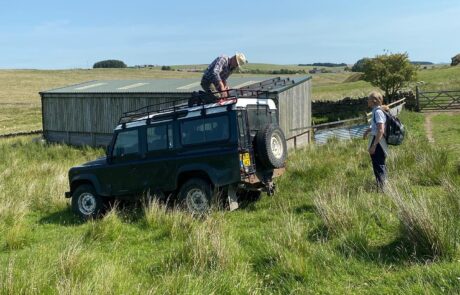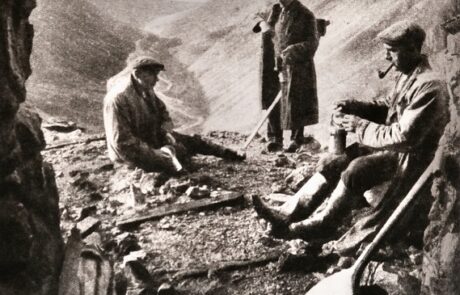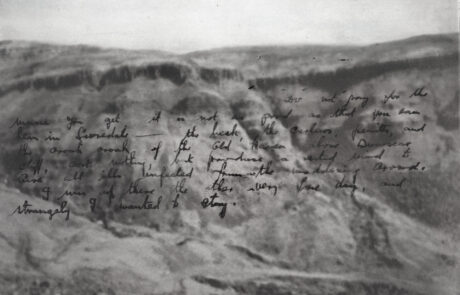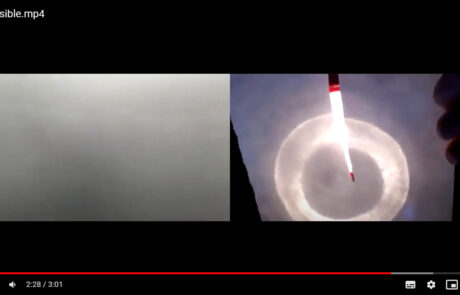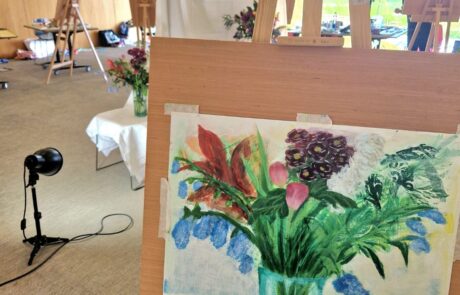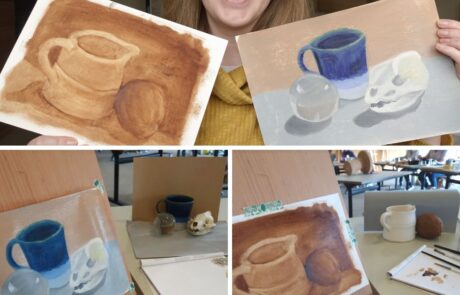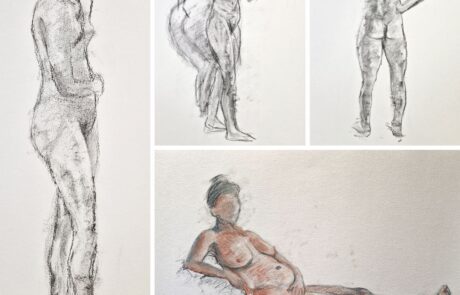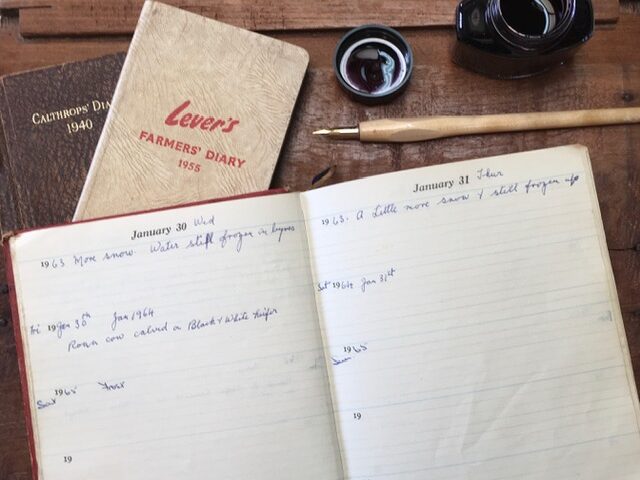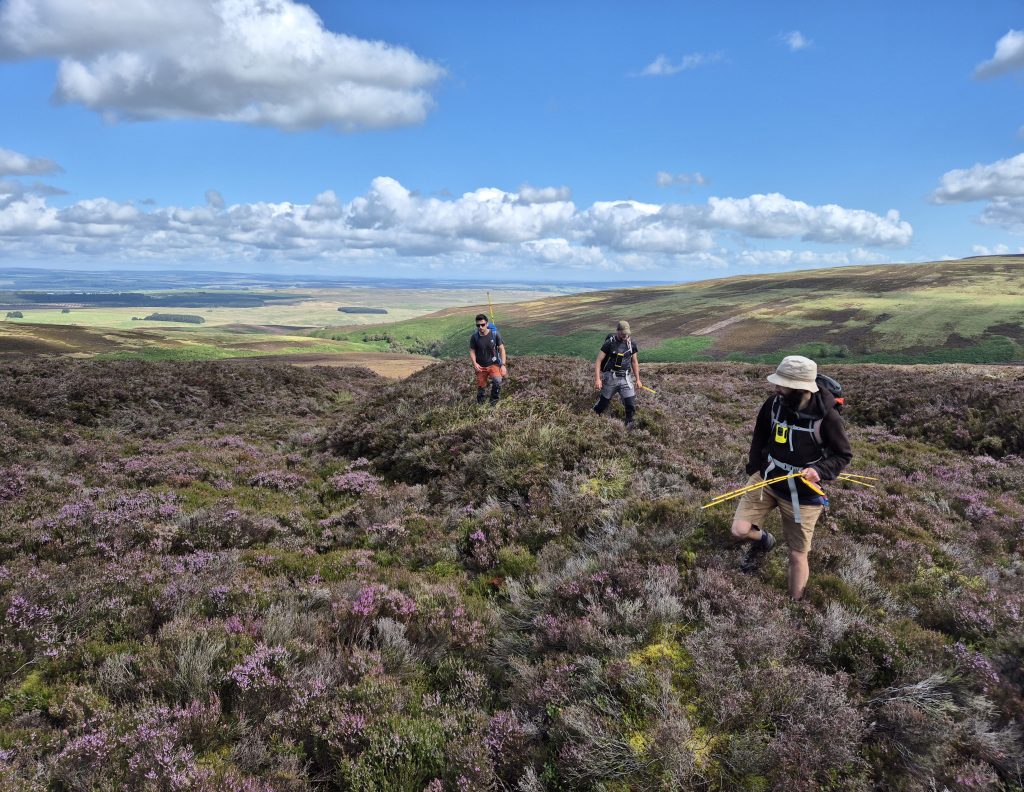What we do
Artist bursaries
Micro bursaries of £500 have been awarded to artists and producers who live or work in the Fellfoot Forward area. The bursaries will run from May to October 2022 and are intended to support artists and producers to develop the next steps with their practice, skills, knowledge, or a new idea. The activities that the bursary could fund include mentoring, site visits, short experiments, research, as well as thinking and development time. The awards particularly focus on nurturing practice that connects in some way to the Fellfoot Forward area – exploring and responding to its histories, its villages, or its natural environment.
The artists have mostly completed their funded activity – two had not previously received an artist bursary before and all stated it was useful in supporting their practice. The artists:
Mark Gibbs
A painter and sculptor, particularly interested in creating work that highlights issues around moorland bird conservation.
“This Fellfoot Forward micro-bursary funded my research and development into a technique new to me – raku ceramics. It allowed me to make a series of moorland bird sculptures and, in particular, it funded kiln time with Pennine based master potter, Dave Norman.
I make bird sculptures feather by feather out of paper, some of which were recently exhibited in ‘Matisse and Contemporary Paper Artists’ at the Rheged Gallery. However, in general, paper doesn’t work with ceramics because it gets burnt in the kiln, so I’ve added it after firing to make mixed-media hybrid sculptures.
This was a brilliant experience, thank you. Although I work with community groups and lead many art workshops, my personal fine art practice is almost solitary. It was great to work with another creative, especially one in a different field and with so much experience. The results of this series are different than I had expected because the raku worked so well.”
Heather Turner
An artist and, previously, a psychologist, Heather’s micro-bursary supported the development and delivery of a public workshop at the Neolithic stone circle, Long Meg and Her Daughters. This was her first artist bursary.
“I once saw an exhibition of Fernand Deligny’s Wander Lines at the Welcome Institute in London. These drawings were made over a ten year period in the 60/70s by tracking the movements of children on the autistic spectrum. Deligny’s work captivated me. He challenged the status quo and developed an understanding of autism that was very different from the predominant psychiatric models of his era, especially those influenced by rigid institutionalised opinions.
Building on the work of Deligny’s wander lines with children on the autistic spectrum and Sir Richard Long’s work of creating art using GPS, I set a quest at Long Meg. Whilst the group completed the quest, did some drawing and generally had a nice time, MapMyWalk captured their wander lines. These were traced on to a map/diagram of Long Meg to produce an artistic representation of their afternoon. This was printed off, framed and presented to the group and was received with great glee.”
Niki Colclough
An artist based in Manchester UK, Niki works on projects and commissions to explore how art can address social issues, with a focus on care, wellbeing and the environment. In 2021 she trained as a Shinrin Yoku (forest bathing) leader and has since been incorporating these techniques and ideas into her arts practice. Niki also leads the module ‘Approaches to Engagement’ on the MA Socially Engaged Art Practice at the University of Salford.
“During the first heat wave of 2022, amongst news reports of how to take care of ourselves and others, a tide of climate change statistics, and an ocean of ice cream instagram stories, I arrived in the North Pennines AONB to undertake a week long research and development artist residency.
Research suggests that building a strong connection with nature can encourage pro-environmental behaviours, furthermore, holding a reciprocity with nature can be a useful tool to manage mental and emotional wellbeing – another kind of social crisis. My work has an artist has centred care for many years; touching on community, place and connection. More recently, it has explored how art making can play a role in bringing people together with, and in, natural environments.
Prior to my residency, I researched touch as a sensory tool for connection – medical research suggests that touch can modulate the perception of physical pain. Social touch has been associated with communicating different intentions and emotions; for example, sympathy and love have been associated with stroking touch. Gentle, slow touch has been shown to increase feelings of belonging, and dynamic touch conveys positive social intentions such as support. I wondered if touching nature and natural objects could provide these benefits whilst also inspiring awe, wonder, and compassion for the natural world.
During the residency I spent time with people who touch nature as part of their environmental work. This included workers from the North Pennines AONB Partnership, including members of the AONB’s peat protection team, and Eden Rivers Trust. I was curious to know if their daily encounters with nature could provide an insight into how a strong connection with nature is established and what that connection meant to them. What struck me was the passion that all of these people brought to their jobs, their motivation was both external (to care for the planet) and internal – each person I spoke to retold their personal route into this work and the joy that it brought to them. Unanimously, they credited their time in nature as the root of their wellbeing.
A highlight of the week was spending time with Hamish and James of the AONB’s peatland restoration team. My surname Colclough means ‘dweller by the bog’ and I thought about this place being part of my ancestry as we ascended into the clouds and onto the heights of the Pennines. The peat bogs support many species of plants that I had never seen before – grasses and mosses, so many colours and shapes, both desolate and beautiful. Learning about the importance of peat bog restoration in fighting climate change and debating the Anthropocene (the age of human’s impact on the planet) was both inspirational and thought-provoking. Holding these conversations against the backdrop of the extreme heat we were experiencing only highlighted the importance of nourishing our love for nature. Using art as a tool to facilitate ways for people to explore and enjoy nature is another way of sharing the knowledge and ideas with people who aren’t lucky enough to work in environmental roles full time or live within easy access of wild spaces.
This experience will now go on to directly inform the development of artworks, workshops, and events to connect people (especially urban- dwellers) with nature, for the benefit of both ourselves and the planet.”
More about Niki Colclough
Ruth Wharton
A visual artist local to the Fellfoot Forward area, Ruth’s practice relates to the North Pennine landscape, and particularly the evidence of mining. She has a local farming and mining background – her grandfather ran two barite mines and employed Nenthead men. Ruth started her artistic practice later in her career and the bursary funded her to attend two days of specialist photo etching tuition in Copenhagen. This has enabled her to help develop her printmaking and to introduce photography and text into her practice. Her artistic development has been enhanced by a deeper understanding of UV processes in printmaking and by increased research experience. The bursary has also supported her to evolve a planned exhibition that will blend historic texts and photographs relating to mining activity within the Fellfoot Forward communities and landscape.
“The highlight was both in gaining the initial knowledge in Copenhagen and especially in its ongoing application in a project around the Fellfoot Forward landscape and social and industrial history.”
Alex Farines
A Brazilian born neuro-divergent creative practitioner living in Penrith. The bursary enabled Alex to devise and test a series of creative tasks, indoors and out in the Fellfoot Forward area, as well as individually and in a group. Working with twenty-seven local participants with experiences of mental health difficulties and/or trauma, the arts activities, which supported participants to creatively explore the world around them, to build empathy with others in their network, and to reduce feelings of social isolation, were trialled.
“(Through this bursary) we were exposed to a highly stimulating atmosphere. We gained self-confidence to discuss and brainstorm. We now believe more in ourselves and tend to express interest to join other initiatives in the broad field of arts & society.”
Coralie Martlew
A portrait artist specialising in pet and people portraits in graphite pencil, based in Lazonby, Penrith. Coralie is an early career self-taught artist who used the bursary to pay for illustration and portraiture classes that she had not previously had the opportunity or funding to pursue. Her focus is on life in the Fellfoot Forward area and the bursary has supported her professional development and further her practice, including sharing her skills with local communities.
“I felt very fortunate to be able to fund new experiences and learning to progress my art career, which I would not have been able or had the confidence to do on my own.”

